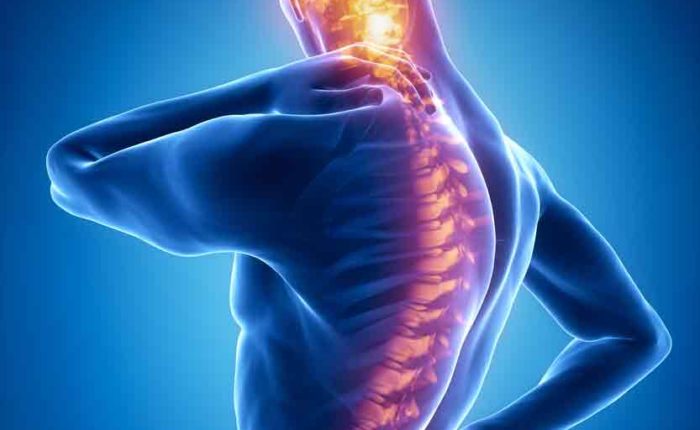Facet joint syndrome is pain at the joint between two vertebrae in your spine. Another term for facet joint syndrome is osteoarthritis.
The facet joints are the joints in your spine that make your back flexible and enable you to bend and twist. Nerves exit your spinal cord through these joints on their way to other parts of your body. Healthy facet joints have cartilage, which allows your vertebrae to move smoothly against each other without grinding. Each joint is lubricated with synovial fluid for additional protection against wear and tear.
When your facet joints become swollen and painful due to osteoarthritis, it is called facet joint syndrome.
Symptoms
A facet syndrome is an irritation of one or more joints located on either side of the spinal vertebrae. Symptoms include stiffness, a dull ache radiating to a hip or buttock, or a sharp and catching pain when initially injured. An acute episode can cause significant loss of motion and moderate pain. This is often described as “my back went out.” Symptoms are usually worse when arching back or leaning to one side, causing compression or “pinching” of the joint. The pain usually centers in the low back area and doesn’t radiate down the leg.
Causes
“Core” weakness of back and abdominal muscles, often in conjunction with tight hip flexors, can underlie this syndrome, especially when there are frequent recurrences. Common causes include poor lifting and bending techniques or activities that cause the spine to over-extend or over-arch. A chronic facet syndrome is often due to arthritis or degenerative changes in the spine leading to too much compression of these lumbar joints. Associated areas of stiffness in the hips or thoracic spine may also lead to excessive pressure on the lumbar facet joints.
Relief
Effective treatment consists of specific joint mobilization to “open up” or unload the facet joint and take pressure off. Deep soft tissue mobilization to the surrounding muscles reduces pain, stiffness and the tension which results from protective guarding. Initial exercises take pressure off of the facet joint, and a continuing customized exercise program re-educates the core abdominal and back muscles. Research shows this combination of mobilization and strengthening exercise significantly reduces the likely return of symptoms.


